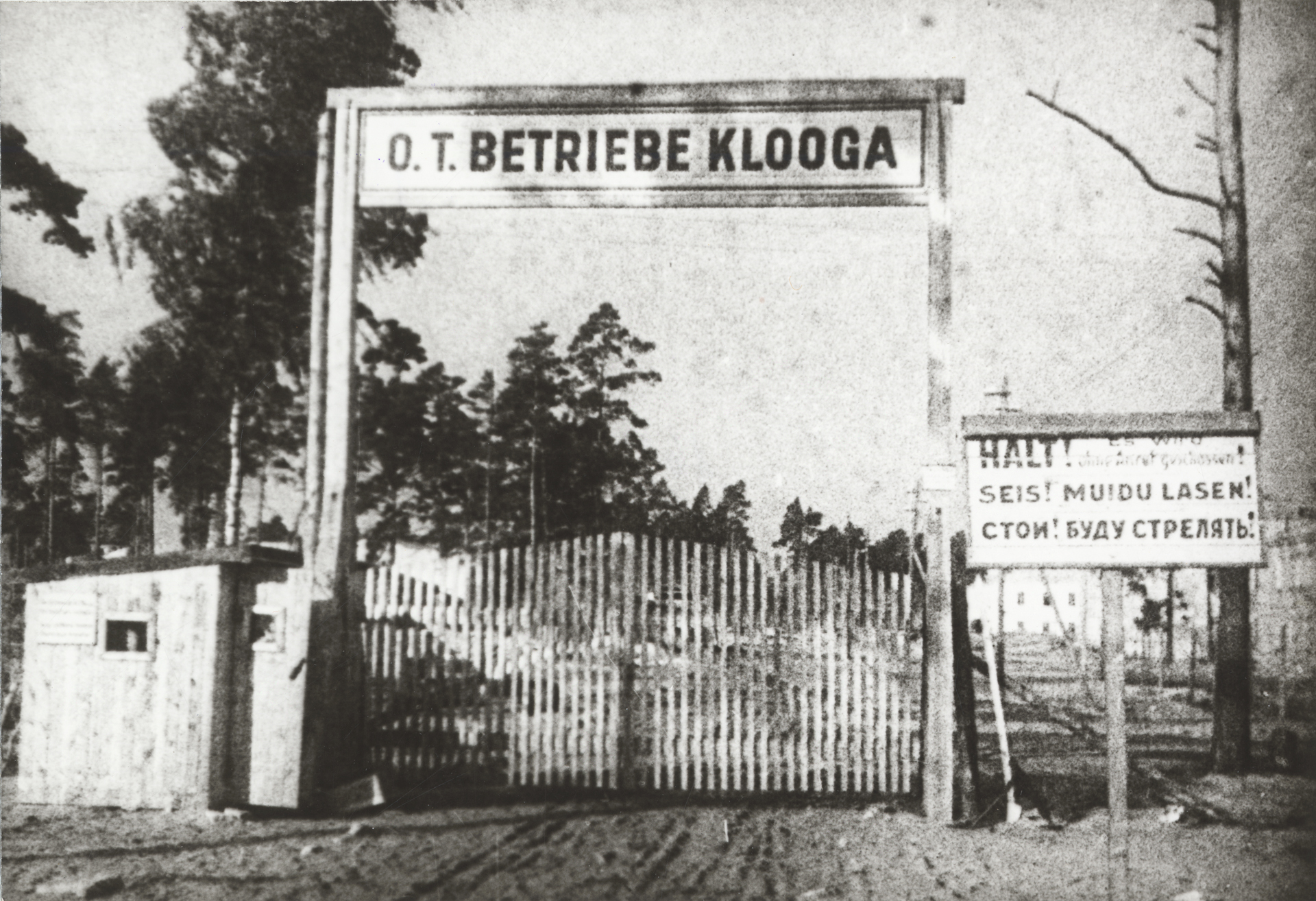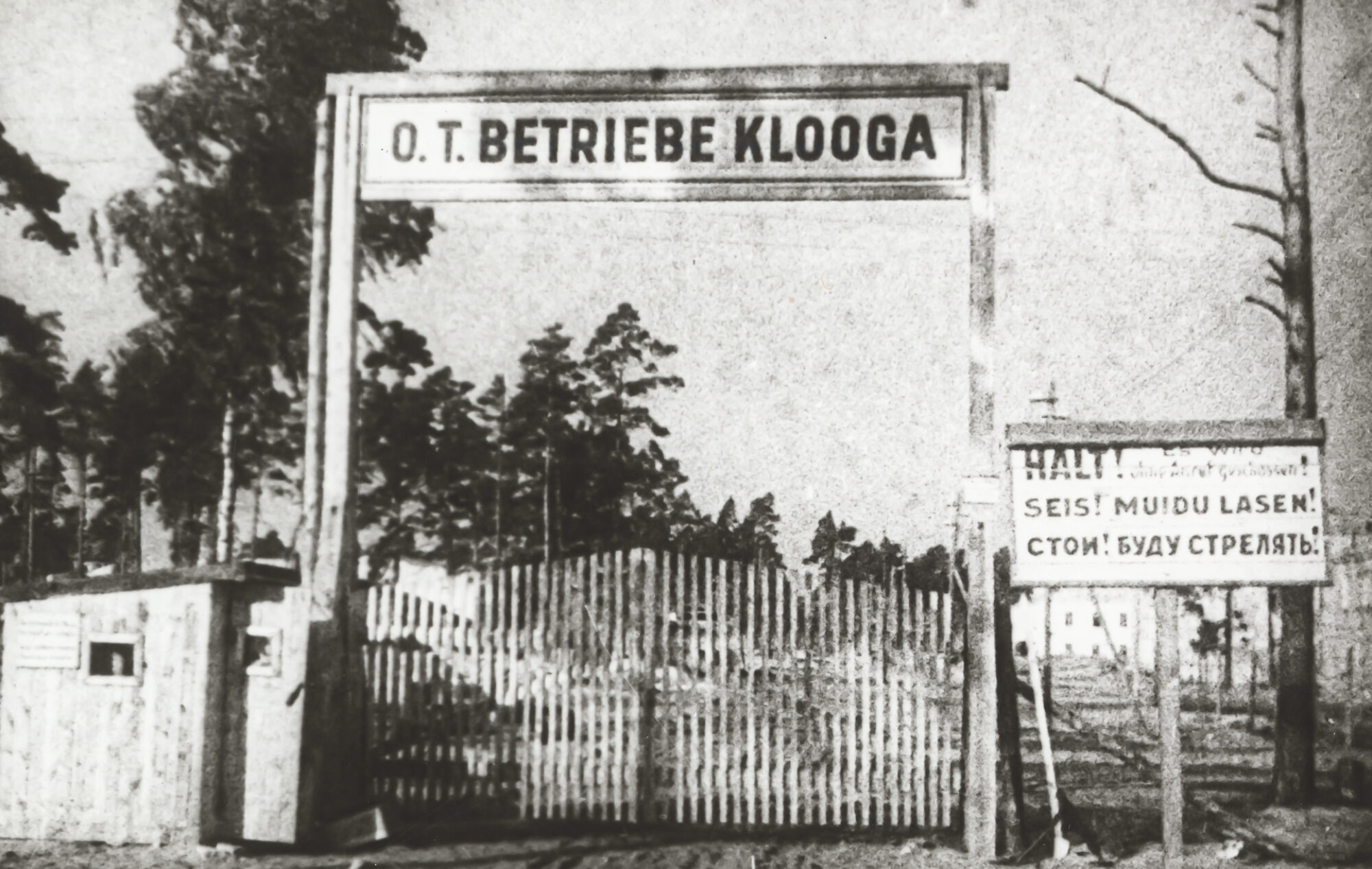Klooga was one of the largest sub-camps of the Vaivara concentration camp and operated for the longest period – from September of 1943 to 19 September 1944. Unlike most of the Vaivara camps, Klooga had no connection to the shale oil industry in Eastern Estonia, and the prisoners were primarily employed in production of military importance – the timber and concrete industries.
The camp was established in September of 1943 near the village of Klooga. During the preceding occupation by the Soviets (1940–1941), the area had been turned into a sealed off military area. In the period of German occupation, the German “Organisation Todt”, a state-run engineering and construction company, established a camp in Klooga. Before the arrival of Jewish inmates, civilian workers were employed and to a lesser extent Soviet POWs and ordinary criminal prisoners.
Later, a camp for the Estonian Waffen-SS Training and Reserve Regiment was established near the Klooga camp. Ingrian Finns and Russians from Leningrad oblast were evacuated from the front and brought to Klooga in the winter of 1943/44. These evacuees were not prisoners like the Jews, but lived in a separate refugee camp in Klooga, and in camps in the nearby villages of Põllküla, Laoküla and Paldiski.
The Klooga camp was surrounded by a four-metre-high barbed wire fence. The area of the camp was approximately 1,000 x 500 metres with three two-storey brick buildings in the middle. Two of these were surrounded by barbed wire and used to accommodate inmates. The third housed the camp office and administration.
The commander of the Vaivara concentration camp was SS-Hauptsturmführer Hans Aumeier, who had previously served at the Auschwitz concentration camp. The commandant of the Klooga sub-camp was a junior SS-officer, who had two deputies and also two or three SS staff members. In 1944, before the camp was disbanded, the camp commandant was SS-Untersturmführer Wilhelm Werle. The Klooga camp guards were mostly members of the 3rd Company of the 287th Police Battalion, formed from among Estonian conscripts in 1943.
When the Red Army re-conquered Estonia in August of 1944 from German troops, more than 3,000 Jews in the easternmost camps of the Vaivara complex were evacuated to Stutthof concentration camp. Before escaping to the west via Paldiski harbour near Klooga, the senior staff of Vaivara concentration camp gathered at Klooga to organise the mass murder of the remaining prisoners in Estonia.


